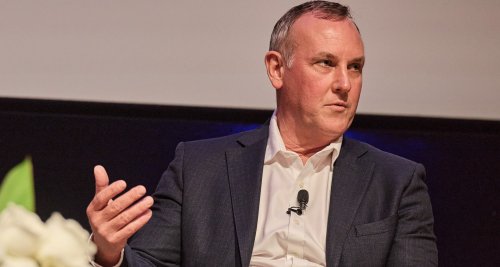What’s on the horizon for the 2020s?

The Australian equity market has underperformed the US share market over the past decade, with our big miners and banks capping returns compared to the US market’s heavy exposure to technology and other growth stocks. But there’s good news. Over the next 10 years, we expect it to do much better.
The global equity market for an Australian investor earned nearly 10 per cent annualised real return, while global bonds returned 2.9 per cent a year after inflation. Australia’s equity markets could not keep up, delivering a 5.6 per cent annualised real return, though bonds delivered a 3.7 per cent annualised real return.
But the local equity market is in a far better position entering the new decade. Over the next 10 years, we expect a strong outperformance; based on our empirically informed understanding of capital markets, Australian equities are expected to deliver an average 4.5 per cent real return a year over the next decade. Meanwhile, US equities are forecast to lose 1.3 per cent a year in real terms.
The price of an asset now matters very much to these forecasts – richly priced assets tend to deliver underwhelming returns, while relatively inexpensive assets are positioned to deliver healthy returns over the medium to long term – and from today’s low relative valuations, Australian share prices are well positioned to rise. Alternatively, recent US prices rises have delivered high historical returns and caused yields to fall, requiring us to revise down, not up, future returns.
Currently, the price paid per dollar of cyclically adjusted real company earnings varies substantially between the US and Australia. In the US equity market, the average cost per dollar of cyclically adjusted real corporate earnings is $30, much more than the historical average of $16. In contrast, a dollar of cyclically adjusted real earnings costs only $19 in Australian equity markets, $17 in Europe, and $14 in emerging markets. Why the large discrepancy?
We see a bubble in the US stock market today. Currently the five largest market cap stocks in the US are tech high-fliers: Alphabet, Amazon, Apple, Facebook, and Microsoft. While the US stock market is currently priced at an average of $30 per dollar of cyclically adjusted real earnings, the largest 10 securities by market capitalisation are priced at $45 for the same earnings exposure.
Can all of these five tech high-fliers collectively succeed to sufficiently justify their expense and current $8 trillion-plus combined market capitalisation? Not only is that impossible, but implausible. Several tech giants sport startling valuation multiples – and all trade at levels that require robust continued growth. These companies are at war – in some cases directly with one another – for market share and are facing a growing risk of regulatory constraints. If history is a guide, Apple, for example, may still be in the top 10 list (but no longer number one) by market cap in 2030, and perhaps one of the others will still be on the list, but at least six of the seven will underperform the market over the next decade.
In contrast, the Australian equity market is dominated by financials, reeling from the Hayne royal commission and resource companies, hit by concerns over global growth. This leaves the market darling CSL trading at over $120 per dollar of cyclically adjusted real earnings. While the earnings growth of CSL has been stellar, the market is focusing on the tech in this biotech company. In comparison, the remainder of 10 largest companies cost between $10 and $25 per dollar of cyclically adjusted real earnings.
Ranking the top 10 companies of both Australia and the US, the stark valuation difference is obvious. Only one (CSL) of the top 10 Australian companies is priced similarly to the US companies. Likewise, only one US company (JP Morgan) is priced similarly to the Australian companies. One may argue that the US companies are new and looking at their 10-year history is not fair. To this I agree, but as the largest companies, they will need to deliver the largest aggregate earnings. This profit, if it is maintained, let alone further increased, needs to come at the expense of other companies.
We understand some investors may be disappointed with our capital market expectations, especially given the impressive global equity returns of the last decade, but we believe our forecasts capture the forward-looking reality of capital markets given current conditions. We encourage investors to have realistic expectations.
Realistic, to be clear, does not mean conservative for the sake of creating a buffer against disappointment, but rather an unbiased view of the future – as likely a surprise to the downside as to the upside. Having realistic expectations allows investors to invest and plan accordingly. Investors can access our forward-looking data on our website.
Mike Aked, Research Affiliates – 25 February 2020
Other News
Podcast: The Rules of Investing | From Cold Call to Capital Giant
In this episode of The Rules of Investing, Metrics Group CEO & Managing Partner, Andrew Lockhart discusses the conditions that…
Metrics Credit Partners Completes Acquisition of Taurus and BC Invest
Metrics Credit Partners (“Metrics”), a leading Australian based alternative asset management firm, has today successfully completed the acquisition of Taurus…
INSIGHTS
MCP Income Opportunities Trust (MOT) lists on ASX
Sydney, 29 April 2019: The Trust Company (RE Services) Limited (ABN 45 003 278 831) (Responsible Entity) is the responsible…
MCP Master Income Trust wins Lonsec Listed Fund Award
The award came a year after MXT was listed on the Australian Securities Exchange






